Getting to know the vocabulary and specialized terms related to handwoven carpets is necessary for people who are interested in this field. Also, to introduce this valuable art to the world, we tried to prepare this encyclopedia and make it available to you dear ones. This encyclopedia helps to get clear concepts. If you are thinking of buying an Iranian handwoven carpet or are interested in learning more about it, this exciting resource is for you. So, join us to learn about the world of incredible hand-woven carpets.
Abbas Karbasion: He was one of the famous designers of Iranian rugs and tile patterns. He was born in Isfahan in 1922.
Acrylic: It is a type of flexible chemical paint that can be applied to all surfaces, including cement, plaster, and any other surface. These paints create a moisture-proof coating and are resistant to sunlight or UV.
Afshan: This design includes scattered and irregular patterns of bushes, flowers, and leaves spread across the carpet background.
Afshar: The Afshar are one of the Turkic tribes of Iran. Some of them came to Iran during the Seljuk period and others during the time of Shah Ismail Safavi and established the foundations of the Safavid government. Almost all of the Afshar tribes of Iran live in Kerman province and a small number in northern Hormozgan province.
Ahmed Archang: Master Ahmad Hartamani, known as Ahmad Archang, was one of the most important carpet designers in Iran and Isfahan. He was born in 1914 and died in 1990. Abbas Karbasiun was one of the students of this late master.
All-over: It is a design that has no symmetry in any part and is a carpet from top to bottom.
Amoghli: Mohammad Kahnmoui, nicknamed Mohammad Amoglu, was a Tabrizi merchant who was engaged in the textile profession. He migrated to Mashhad in 1834 and turned to carpet production. He was one of the most prominent masters of carpet production in Mashhad.
Asymmetric knot: It is the same Persian knot used in carpet weaving. The shape of this knot is not symmetrical. In this knot, two ends of the thread are used for tying. This knot is a type of knot in which two ends of the thread are used to create a knot. In an asymmetrical knot, the thread wraps around one warp and comes out from behind the next warp.
Baharlu: It is one of the tribes that make up the Khamseh tribe, which speaks a Turkish dialect. This tribe had 7 clans.
Bakhtiari: They are nomads who live in southwestern Iran. They mainly live in the provinces of Khuzestan, Chaharmahal-Bakhtiari, Isfahan, and Lorestan.
Baseri: One of the tribes that make up the Khamseh tribe is Persian-speaking and famous for their carpets and rugs.
Beating: It is called Knocking the knots of the carpet after weaving a row and also laying down the thick and thin wefts, which causes the knots to settle and also creates smoothness and uniformity on the back of the carpet.
Behesht rug: The Behesht or Eleven Scenes carpet is the most famous carpet of Sadegh Seirafian. Hundreds of natural colors have been used in this carpet to show the beauty of nature in three dimensions. The design of this carpet includes: a main landscape as the background and ten secondary landscapes surrounding the background.
Biodegradable rug: Rugs that are made with environmentally friendly materials and are easily decomposed are biodegradable.
Bote-jegheh: The pattern of the bent cypress tree is a symbol of humility. This pattern is an Iranian symbol that has a great contribution to various handicrafts, especially shawl weaving, textiles, rugs and kilims, and cashmere. Another name for this pattern is paisley.
Carpet: A carpet is a floor covering traditionally made of wool, but since the 20th century synthetic fibers such as polypropylene, polyester, or nylon have often been used because they are cheaper than wool. The word carpet is often used synonymously with the word rug, but the size of a rug is usually smaller than a carpet and it is not attached to the floor.
Chaharchang: One of the patterns of the Malayer Nanaj rug is that it does not have bergamot and regular, geometric shapes are spread throughout the carpet.
Chaharlang: It is one of the two major branches of the Bakhtiari tribe. The Bakhtiari tribe is divided into two main branches, Haftlang and Chaharlang. The history of these divisions dates back to the late 15th and early 16th centuries. Although these two branches of the Bakhtiari tribe do not differ much culturally, the separation of residence has caused differences in the dialect of these two groups.
Chemical dyes: Acid, metallic, and alkaline dyes that are made through chemical reactions and are used for dyeing carpets.
Chegini: It is one of the Lur tribes of Iran, residing in Lorestan or Qazvin and Rudbar.
Chiq: It is called the covering of the walls of the tent of Iranian nomads. It is made of reeds that grow in the form of a car in the nomads’ living area and prevents heat, cold, and rain from entering the tent.
Clan: A tribe is a group of people who are related and united with each other. These people have the same historical roots. Such as the Lur, Turk, and Baluch tribes.
Cleaning: The process of cleaning a carpet with cleaning solutions is called. First, vacuum the carpet and prepare your solution. Wash the carpet, then rinse and let it air dry.
Comb:”Daftin” or comb is a metal device, used to lay down thick and thin wefts in carpet weaving. This tool is used to beat and tighten knots.
Cotton: Cotton is a soft and fluffy fiber obtained from natural plants. Cotton is pure cellulose and has a small percentage of fat, water, and wax.
Dare-Shouri: The largest tribe is the Qashqai tribe, which lives in Isfahan and Chaharmahal-Bakhtiari provinces.
Density(Raj): The number of knots woven across the width of the carpet per unit length.
Doogh: It is a product obtained by mixing yogurt with drinking water with or without salt. In the past, “doogh” was used with madder instead of lactic acid.
Double-knotting: It is a practice that is performed at the end of carpet weaving to enhance beauty, increase the strength of the carpet’s root, and extend the useful life of the carpet.
Double-weft rug(Loole-baft): Carpets that have two thin and thick wefts. Most urban carpets in Iran are double-weft.
Dyeing: It is a process in which a textile product such as wool or cotton fibers is dyed in a solution containing dyestuffs and chemicals, and the dye molecules form a strong bond with the fiber molecules with relative durability. Dyestuffs are all-natural or chemical substances that can dye fibers. The color created should not be easily lost by washing or exposure to light.
Environmentally friendly: It means being earth-friendly. In fact, not harming the earth and the environment. This term is usually used for products and methods that help save resources such as water and energy, as well as prevent air, water and land pollution.
Eslimi: Arabesque or Eslimi is a type of pattern that includes complex lines or circular arcs. This design with short branches and leaves is used in inscriptions and decorations.
Eslimi-Khatai: There are patterns that are drawn with curved lines. They are also called rotating motifs.
Fish(Mahi): It is one of the most famous and popular Iranian motifs. Any element that evokes the image of a fish is called a fish. The fish motif can be placed anywhere on the carpet, such as the border of the carpet, the lachakh, the bergamot, the text, etc.
Fluff: The fine fibers that collect in the comb when combing the bodies of animals such as goats, camels, and sheep are called fluff. Fluff is finer and softer than wool. To collect fluff fibers, the animal’s hair must be combed repeatedly until some of the hair that is obtained is collected.
Gabbeh: A type of small rug, usually woven in small sizes by the Qashqai tribes in Fars Province. The Gabbeh has long pile and simple patterns.
Geometric: All the carpet designs are geometric with broken and angular lines.
Ghiordes knot: It is the same Turkish knot that brings both ends of the pile to the surface between two warp threads. This knot is very common in Iran and surrounding countries.
Golu-Bulbul: It is the flower and nightingale design that is inspired by traditional Iranian images.
Golfarang: The Golfarang or Golpatoo pattern is a type of multi-petaled flower or rose pattern. According to some researchers, this design was not originally in Iran and has entered Iranian artistic designs in various forms. The Golfarang pattern is seen in most Iranian artworks, handicrafts, and carpet weaving.
Gonbad: The dome or dome design is a design designed by Tabriz designers. This design is modeled after the dome of Sheikh Lotfollah Mosque in Isfahan.
Haftlang: There are two branches of the Bakhtiari tribe whose history dates back to the Safavid era in the 16th century and the taxation system. They speak the Lori Bakhtiari dialect.
Haj-Khanomi: This design consists of a large vase in the center and four small vases around it. The flower motifs inside the vases resemble pine cones and are arranged in a way that seems to create a triangle.
Haj Mosavver-Ol-Mulki: Mohammad Hussein Muswar al-Maliki, known as Haj Muswar al-Maliki (1889–1969), was a famous Isfahan designer and painter who reached the pinnacle of perfection in painting and miniatures. He was fully familiar with various painting styles in Iran.
Hand-woven carpet: They are called a type of carpet that is woven by hand and machines do not play any role in their production. To weave handmade carpets, we need tools such as a loom, hook, scissors, comb, etc.
Handmade rug: It is also called hand-woven rug or hand-knotted rug. These carpets are woven by skilled weavers with natural fibers such as wool and silk.
Hand-knotted rug: It is a handmade or hand-woven rug that is woven by hand using the knotting technique.
Hand-spun: Hand-spun wool is spun by nomadic and rural women in some parts of Iran. With the invention of the spinning machine, hand-spun wool is less common than in the past. The fact that the wool is hand-spun means it does not absorb the dye evenly, which adds to its beauty.
Heibat-Lo: They are a group of Qashqai tribesmen from Iran.
Heidar-Goli: It is one of the most famous Nahavand rug designs. The design and layout of this design often includes geometric shapes and special floral elements that, with attractive and warm colors, give extraordinary beauty to Nahavand rugs.
Herbally: It is a type of dyeing method used for natural fibers such as wool.
Horizontal loom: These types of looms are made of wood and are mostly used by nomads. Horizontal looms take up a lot of space and are not used for weaving large carpets.
Hook: A hook is a knife-like tool used in carpet weaving. The knife part is used to cut the knots and the tip of the hook is used to grab the warps.
Hunting scene(Shikargah): It is one of the most authentic Iranian carpet patterns that refers to the tradition of hunting. In this design, you can see different animals from deer to bear that are being hunted.
Jajim: Jajim is like a kilim, made of woolen fibers and often used in cold regions. To weave a Jajim, the loom is placed horizontally on the ground. Jajim is woven thinner than a kilim and is woven in stripes.
Inanlu: It is one of the tribes that make up the Khamseh tribe, which speaks a Turkish dialect.
Kaf-Sadeh(Simple-Background): Designs are called that the carpet background is free of any design.
Kale-Asbi: This design(head of horse) is one of the common designs in South Khorasan Province, especially Birjand. This design is from the category of medallion designs. The reason for naming this design is that there are horses in the second row inside the medallion, which are rotating around the center of the medallion.
Kashkuli: It is one of the Qashqai tribes, which probably have Turkish roots in Iran.
Khadivi: He is one of the prominent and influential carpet manufacturers in Mashhad. He first worked as a rug maker, then began to weave under the supervision of Master Mohammad Amoghlu.
Kheshti: This design is formed by arranging several designs inside various rectangles, which are called brick designs. The carpet background is gridded with geometric, square, and diamond-shaped frames; and inside each of these frames, patterns such as vases, flowers, betel, trees such as cypress and willow, birds, etc. are drawn.
Khorjin: A type of bag that is placed on the back of a pack animal such as a horse or donkey to carry goods. A khorjin is a knotless handwoven fabric woven by nomadic women on horizontal looms.
Knot: It is a practice that forms the basis of a handmade carpet. Weavers tie the pile of the carpet around the axis of the upper and lower warps, forming a knot. When the knots are placed together, the pattern of the carpet appear. The knot has other names such as kheft, Ilmak, etc.
kurk: Soft and delicate wools obtained from combing animal hair are called on the comb.
La: The number of threads in each warp of a Nain carpet determines the density of the carpet.
Lachak: Lachak means corner in Iranian culture. It is a symbol of other ponds in the garden, a quarter of which is placed in the design.
Lachak-Toranj: It is one of the most popular Iranian carpet designs. Lachak-Toranj design refers to the map of Iranian gardens. Iranian gardens are a symbol of heaven.
Lat: They are strips of goat hair woven by nomadic women using a traditional machine. The width of the lats is between 40 and 60 centimeters and the length is sometimes 6, 10 meters or more. After weaving the lats, the nomadic women sew them together to form a black tent.
Lint:It is the pile that forms the soft surface of a carpet.
Loom: It is a device used to weave rugs. The loom can be vertical or horizontal.
Lors: The Lors are an Iranian ethnic group that lives in western and southwestern Iran. They speak a Persian dialect. Generally, the Lors live in the provinces of Chaharmahal-Bakhtiari, Khuzestan, Lorestan, Kohgiluyeh-Boyer Ahmad.
Machine-made rug: Rugs that are woven with artificial fibers by large machines. These carpets are cheap and have a short lifespan.
Mafrash: It is a large bag made of thick cloth or kilim that nomads put their belongings in and use as a bag to carry their belongings.
Makhmalbaf: Mohammad Ibrahim Makhmalbaf is a famous carpet merchant and manufacturer in Mashhad. The late Makhmalbaf produced luxurious carpets for the government. He had a carpet weaving workshop with 61 looms next to his home in Mashhad, and 2 other small workshops in Mashhad and Torqabe.
Medallion: It is also called bergamot. The bergamot is placed in the middle of the carpet background and is circular, or oval.
Mihrabi: The design of the mihrab carpet is inspired by the mihrab of mosques and the prayer rugs of worshipers. This pattern consists of motifs of vases, trees, branches, leaves, etc. The mihrab pattern is a symbol of the Garden of Eden.
Minakhani: It is a type of interconnected design where floral elements are repeated throughout the rug. In this design, you see a small flower repeated throughout the rug background, surrounded by four white flowers reminiscent of daffodils.
Minimalism: It is a school that bases its works on simplicity and lack of usual philosophical complexity. Minimalism essentially means removing unnecessary things from life and preserving the things that give value to life.
Moustofi: This design is one of the most common patterns in the Arak region. The background color used in this design is navy blue, and the color of the large border is red and the small border in this design is cream.
Mohammad-Mehdi Moammatadi: One of the capitalists of the city of Qazvin who, along with several others, founded the Etemad Qazvin carpet company in 1930.
Mojtaba Nabavi: In 1930, he and Mehdi Motamedi founded the Etemad carpet weaving factory in Qazvin. The Etemad rug of Qazvin was of very high quality in terms of wool type, pattern, and color.
Muharramat: The Muharram pattern is one of the very old Iranian patterns in which the carpet text is divided into narrow strips. The strips can be straight or diagonal. The inside of the strips is filled with various colors and delicate patterns. It is also called the striped pattern.
Nafar: One of the tribes that make up the Khamseh tribe is living in the Zagros region and is named after the founder of the tribe.
Namakdan: Namakdan Or salt bag is a nomadic handicraft used to carry and store salt. Salt bags are mostly woven for shepherds to carry the salt needed by their herds.
Natural colors: They are a group of dyes that have plant and animal origins and are mostly used in traditional dyeing. Indigo, grape leaves, beets, onion peel, mulberry leaves, and saffron are among the plants found in Iran and their dyes are used in herbal dyeing.
Nazem: The Nazem pattern is a very old design that has been woven in almost all cities of Iran since the Safavid era under the name “Vase pattern”. It has also been woven exclusively by the Kashkuli tribe weavers in the Qashqai tribe since about two centuries ago. This design is also known as Haj- Khanomi in the bazaar.
Nomads: A group of people who do not have a permanent place of residence and migrate from one place to another to find new pastures for their livestock.
Nomadic: Anything related to nomads
Niavaran Palace: It is a historical monument that was used as the summer residence of Mohammad Reza Pahlavi and his family during the Pahlavi era. This palace, which covers an area of about 11 hectares, is located in Niavaran Square in Tehran and has now been converted into a museum.
Nim-lole: It is a type of weaving method in which the knots on the back of the carpet have a 45-degree bend. In this method, the threads are not attached together at the top of the loom.
Persian knot(Asymmetric knot): This type of knot is mostly used in cities such as Mashhad, Kerman, Arak, Isfahan, Nain, Qom, Kashan and Birjand. In this type of knot, the weaver ties the fluff around the right-hand warp and brings it out from behind the left-hand warp.
Pile: It is obtained by tying wool or silk fibers on the warp and weft and shows the pattern of the carpet.
Picking: It is called shearing sheep. It is best done in the spring.
Prayer(Mihrabi):The prayer design is reminiscent of the mihrab of a mosque and the place of prostration for worshippers. This design includes motifs, flowers of the Shah-Abbasi , branches and leaves, vase and tree patterns, etc. The mihrab design expresses a symbol of the Garden of Eden.
Polyester: It is a synthetic fiber made from coal, air, oil, and water. It was first produced in the 20th century in a laboratory by the reaction between acid and alcohol. Polyester fibers can be durable and strong. These fibers are not moisture-absorbent, but they can absorb oil.
Qashqai tribe: It is one of the major tribal tribes of Iran that have Turkish roots and speak one of the Turkish dialects. The Qashqai tribes mainly live in Fars province. However, due to their large population, they live in other provinces such as Isfahan, Chaharmahal-Bakhtiari, Khuzestan, and…
Qishlaq:It is a warmer place where nomads reside during the cold seasons of the year.
Raj: The number of knots in a given unit of width of a handmade carpet is called the raj. For example, in a Tabriz rug, the raj is the number of knots in 7 centimeters.
Reseda: It is a type of plant used for dyeing fibers.
Rabbi-Saadi: One of the original designs is the Birjand Mood carpet. This design is in the medallion design group. The medallion of these carpets is in the shape of a sun, with rays that number 16 or 32.
Runner: It is a rug that is usually 1 or 1.5 meters wide and can be 2, 3 or 4 meters long. Runner rugs are great options for kitchens and hallways.
Sarraf: A person or company whose business is to exchange the coins or currency of one country for the currency of another country.
Salt bag: Salt bags are nomadic handcrafts used to carry and store salt. Shepherds carry salt bags with them to provide the salt needed by their herds.
Selvage: The strips on both sides of the carpet from top to bottom are called selvage. In some areas, selvage is woven with the carpet from the beginning. However, in most areas, selvage is added to the carpet after it is woven.
Senneh: The senneh(Sanandaj) knot or Persian knot is an asymmetrical knotting method in carpet weaving.
Shah-Abbasi flowers: It is one of the original and old designs of Iranian carpet. This pattern reached its peak during the Shah Abbas Safavid era. The Shah Abbasi flower is used in Khatai-Eslimi design.
Shahsevan: They are a group of Azerbaijani nomads who speak Azerbaijani Turkish and live in parts of Iran, especially Azerbaijan, the Mughan Plain, Ardabil, Zanjan, and Qazvin.
Shekarlo: A tribe of Qashqai tribes
Shesh-Bloki: The most populous tribe is the Qashqai, who are particularly skilled in raising livestock. The Shesh- Bloki tribe is one of the very old Qashqai tribes and is one of the Iraqi Turks, the early immigrants.
Shikargah: Or hunting-ground is one of the oldest designs of Iranian carpets. This design has a direct reference to the theme of hunting. The most important feature of hunting-ground motifs is the presence of animals such as deer, elk or even wild animals. Another feature of hunting-ground motifs is the presence of elements of men and horsemen hunting with arrows, bows and swords.
Shirazi-Khatam: One of the original designs of the Bijar rug
Signature: It includes the symbol, title, or name of the person who weaves the carpet at the beginning or end of the work. The carpet’s signature indicates the authenticity of the carpet.
Silk: It is a natural protein fiber that is produced by the larvae of insects such as silkworms. Natural silk is expensive and graded. Iran’s exquisite carpets are woven from first-class silk.
Silkworm cocoon: The silk casing of a silkworm is called a cocoon. It is a material that silkworms spin around themselves from their mouthparts. This material is used in the manufacture of silk and is very valuable.
Simorgh: It is the most wonderful bird in Iranian literature, which plays an important role in the stories of the Shahnameh. Simorgh represents resurrection and life after death.
Simple-Background: Or the “Kaf-sadeh” design is one of the designs of Iranian handmade carpets that are simple and without complex decorations. This design has more empty spaces than a busy carpet and is suitable for minimalist spaces.
Single-weft rug(Takht-baft): Rugs that have a relatively thick weft. Most rural Iranian rugs are single-weft.
Siyah-Chador: It is a type of tent woven by nomadic women from goat hair. The siyah-chador or black tent is the nomads’ place of residence and rest.
Sistan-Baluchistan: It is the second largest province in Iran, with the city of Zahedan as its capital. This province is located in the southeast of Iran.
solution: The mixture made by combining water, white vinegar, and liquid detergent is used to remove carpet stains.
Spinning: It is a process that is performed to convert wool fibers into yarn. These yarns are then used to weave carpets.
Stain: A spot or dirt that forms on the carpet.
Stik: It is like a metal skewer that is about 50 centimeters long and has a hook-shaped head. The skewer is used to pass the weft through the hems.
Striped(Moharramat): In this design, parts of a map are repeated along the length of the rug, and the width of the carpet is divided into several rows in the text and drawn in stripes. Each row consists of a specific color and pattern.
Sustainable rug: Rugs that are produced from sustainable raw materials. Raw materials are usually natural and renewable fibers such as wool and jute. These rugs are biodegradable.
Symmetrical knot: The symmetrical knot or Turkish knot is the most important type of knot in carpet weaving. If you look at the back of the carpet, the shape of this knot has bilateral symmetry.
Synthetic fibers: A group of textile fibers that are made synthetically by special methods and do not normally occur in nature.
Tarpaulin tents: A type of tent made of tarpaulin fabric. This tent is suitable for outdoor use, as a camping tent or as protection from rain.
Takht-baft: Orsingle-weft are carpets that have only one weft that passes through the warps in each row. In this weaving method, all the warps of the carpet are in one row next to each other.
Tree of life: It is one of the oldest designs of handmade Iranian rugs. In this design, you can see a tree taking up the entire field. The tree in this design symbolizes immortality and deathlessness.
Tribe: A group of people with a common language, beliefs, and customs who live together.
Toranj: The symbol of Iranian garden is the pond, which is decorated with leaves of Eslimi-Khatai and Shah-Abbasi. Toranj is usually designed in circular, oval or geometric form. It is also called bergamot or medallion.
Turkish knot(Symmetrical knot): The Turkish knot is the strongest knot tied to a carpet pile. In the symmetrical knot, the thread passes through the middle of two piles and then comes out from between them after going around them. This knot is the strongest knot. The Turkish knot is used in the cities of Tabriz, Ardabil, Heriz, Fars, and Hamadan.
Turkmen: They are a group of Turkic-Iranian peoples who live on the eastern shores of the Caspian Sea, including the northern and eastern parts of Golestan Province and parts of North Khorasan.
Two-weft technique: In this weaving method, two wefts, thick and thin, are used. First, the thick weft is passed under the cross and the thin weft is passed loosely over the cross and laid in each row with the help of a shuttle. If you look at the back of the carpet, the thick and thin weft are often not visible. This weaving method is mostly used in urban carpets.
Vaghireh(Interconnected): In this pattern, a small part of the design is repeated in the longitudinal and transverse directions, and these components are connected to each other with lines and patterns.
Vegetable dyes: Dyes that have natural origin and are obtained from plants such as saffron, chamomile, walnut shell, barberry, turmeric, etc.
Warp: The warp is a set of threads that are stretched on the loom before the weaving begins. The warp thread can be cotton, wool or silk.
Washing: The act of washing wool or carpets is called.
Weaving: The art of putting together the warp, weft, and pile of a carpet is called.
Weft: All threads that are used in the width of the rug are called weft. Weft is usually made of cotton.
White-Lachak: One of the Nahavand rug designs has white corners.
Vertical loom: The carpet weaving machine is vertical or standing, which uses the floor and wall as two supports for standing and does not take up much space in the environment.
Wool: It is a fiber obtained from animals such as sheep, goats, and camels. Most of the handwoven carpets are made from sheep wool.
Yalame: It is a type of Iranian handmade carpet woven by the Qashqai tribe living in Shiraz, Isfahan, Lorestan, and Bakhtiari.
Yaylak: It refers to the cold regions that nomads choose as their spring and summer residences during their migration.
Yurt: A type of tent used as a place of residence in Central Asia and Azerbaijan. A yurt is usually made of wool and natural skins and is portable.

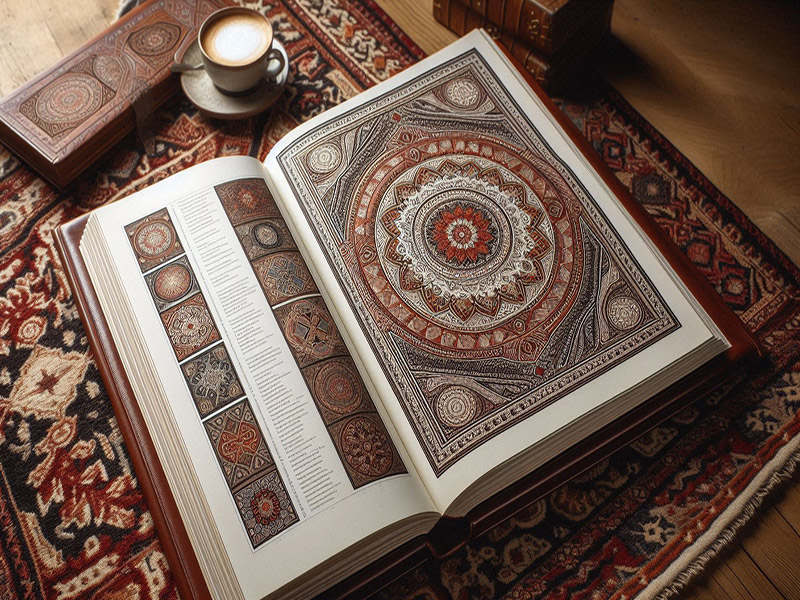
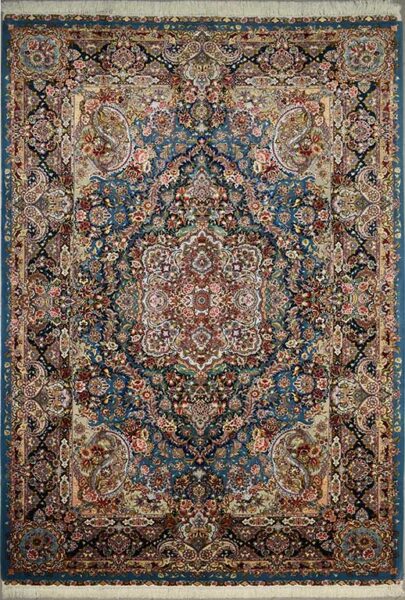
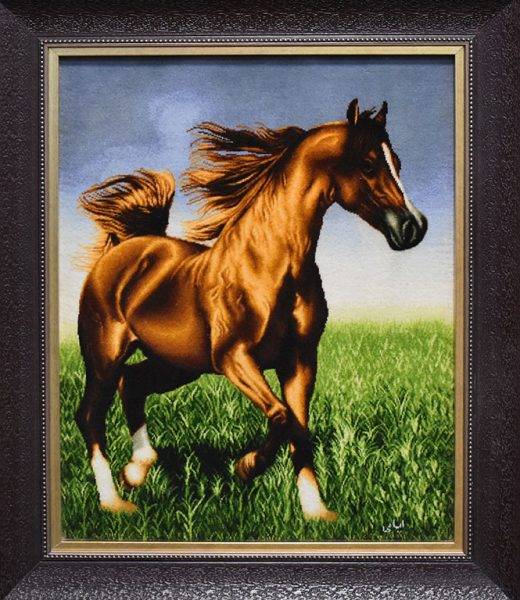
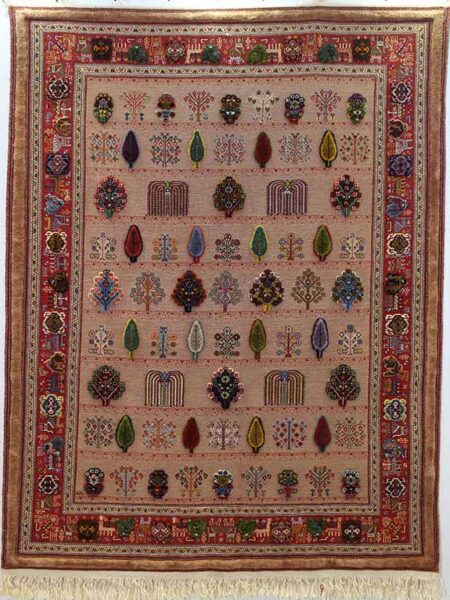
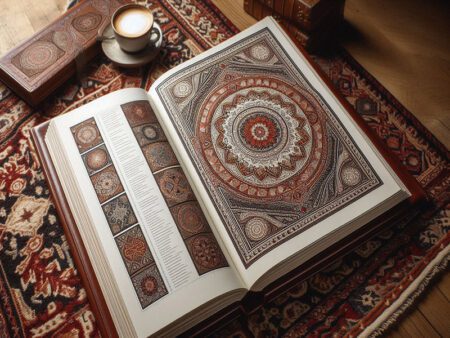
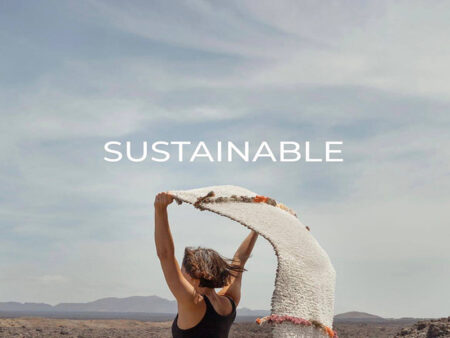
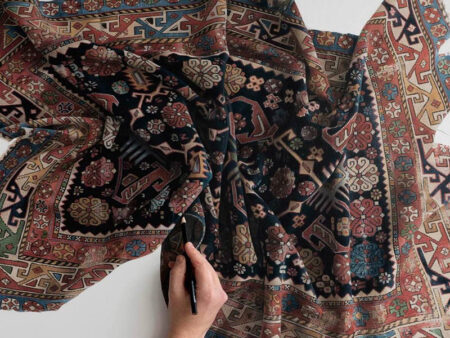






3 thoughts on “Rug Encyclopedia”